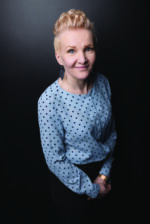A Step Forward in Safety – The New Rules for Smoke Alarms
New Zealanders’ homes are set to become safer with the implementation of a Building Code update by the Ministry of Business, Innovation and Employment. From 01 November 2024, it will be mandatory for all new homes to have a Type 1 Smoke Alarm System. C1-C6 Protection from Fire – Acceptable Solution C/AS1, published by MBIE on 02 November 2023, requires that “each household unit shall be provided with a minimum of Type 1 domestic smoke alarm system in compliance with NZS 4514.” What is a Type 1 Smoke Alarm System? A Type 1 is a smoke alarm or multiple interconnected smoke alarm devices, each containing a smoke detector and an alarm sounding feature. According to MBIE, interconnected smoke alarms alert occupants in residential fires faster and provide occupants more time to respond and escape from a fire. Where does NZS 4514:2021 require smoke alarms to be installed? Smoke alarms are required in all bedrooms, living spaces, hallways, and landings within the building. How Do Interconnected Smoke Alarms Work? Interconnected smoke alarms work by sending signals between the smoke alarms in a house. This means that if one smoke alarm in a particular room detects a fire, all the smoke alarms in that house will activate and sound an alarm – adding an extra layer of safety by letting everyone in the house know about a fire at the same time, even if they are further away or sleeping. Transition Period Changes From 01 November 2024, previous versions of acceptable solutions and verification methods will no longer be deemed to comply with the Building Code. For new buildings, a hard-wired interconnected smoke alarm system can be installed during construction while the house is being wired. For those who wish to upgrade to the new Building Code requirements in the course […]










